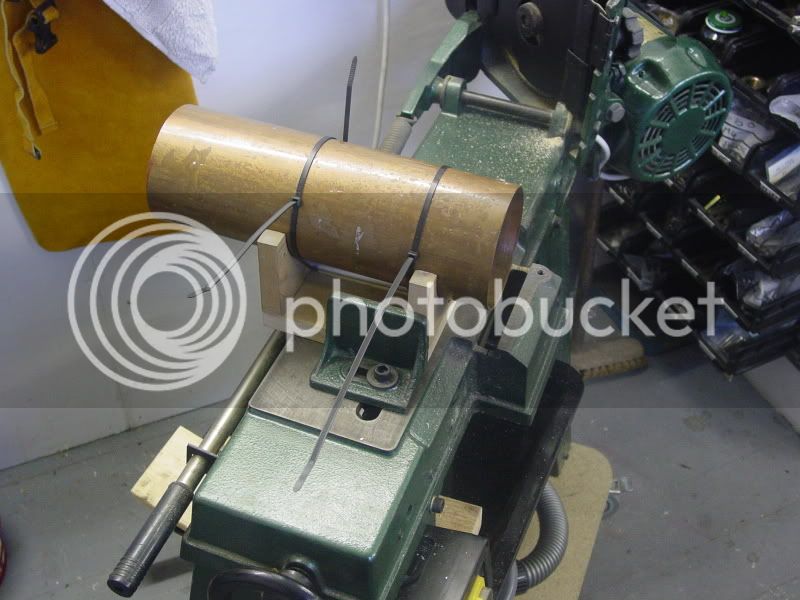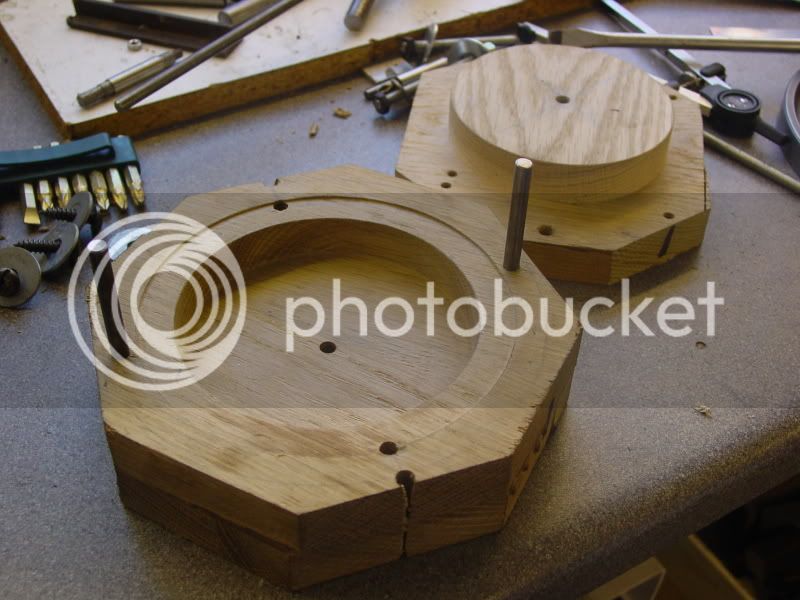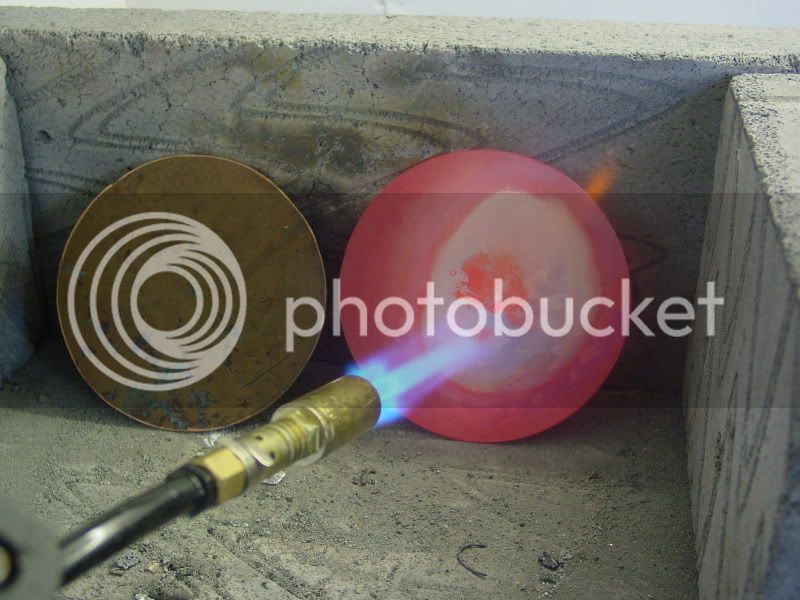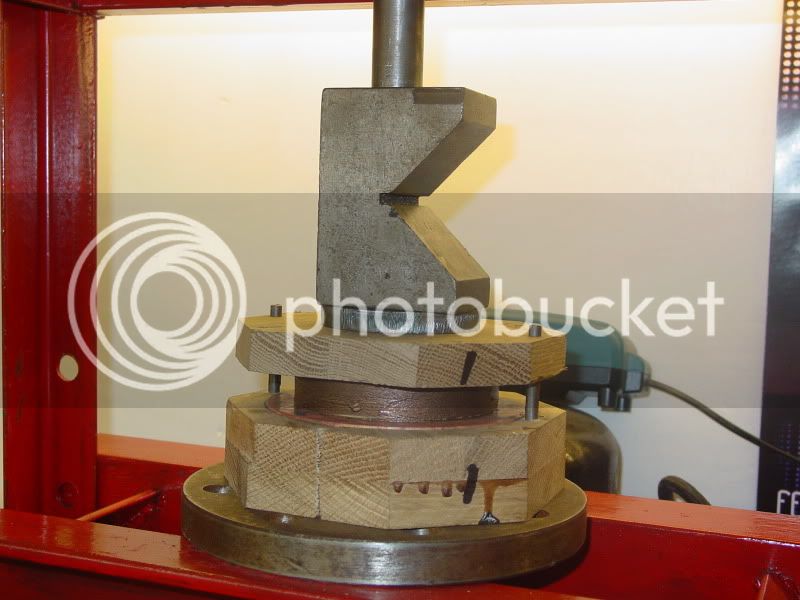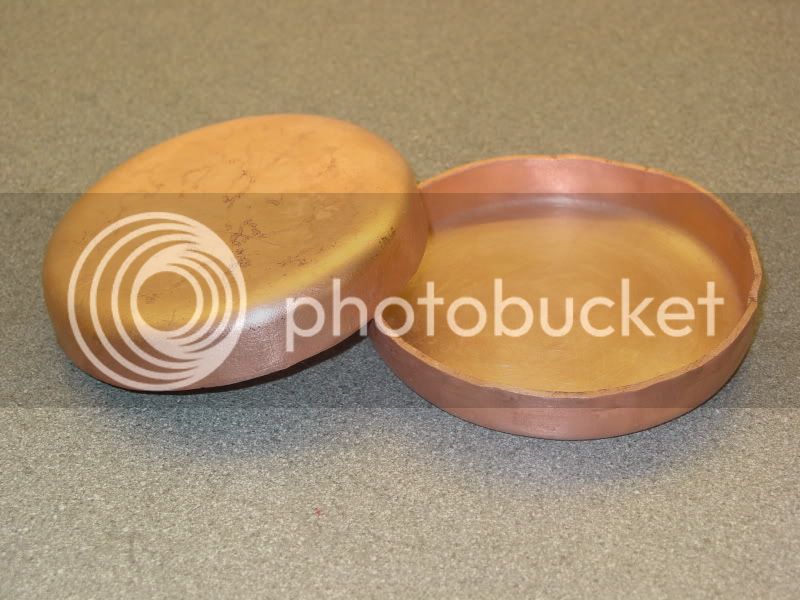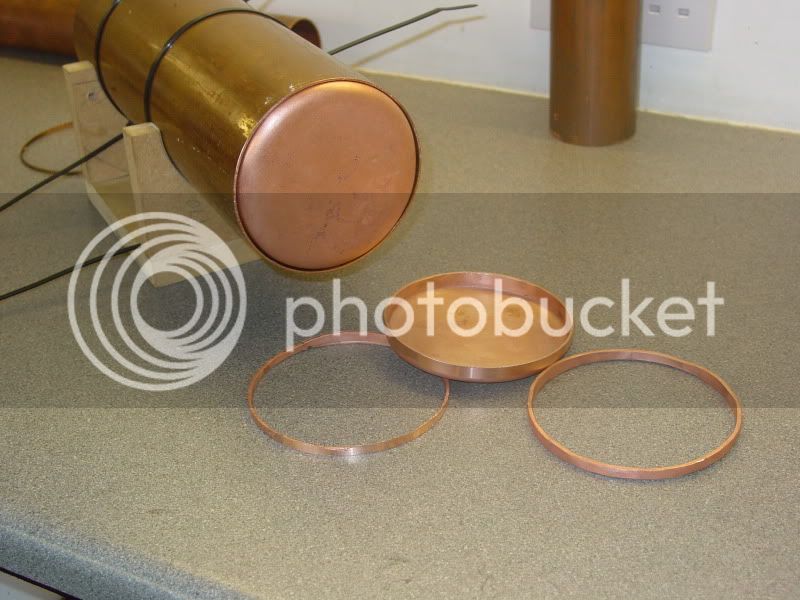Hi
Jason, Thats an interesting technique I'll bear it in mind, thanks.
Dave, if you can find it I would like to take a look.
Jim, I just love messing about with new ideas.
Sneaked a couple of hours today so had a go at another crankshaft. I have used the same jig with a few more holes drilled and tapped so I only had to juggle about with the existing bits.

I've used a bit of 3/8 steel bar this time. The first bend I did cold in the press using the 90° point and a matching block.

The second bend I did with heat.

The 3rd bend.

And the 4th.

Pretty good but not quite good enough yet. The first and second bends are not equal, they look odd. I have either got to do them both cold or hot.

Cheers
Rich
Jason, Thats an interesting technique I'll bear it in mind, thanks.
Dave, if you can find it I would like to take a look.
Jim, I just love messing about with new ideas.
Sneaked a couple of hours today so had a go at another crankshaft. I have used the same jig with a few more holes drilled and tapped so I only had to juggle about with the existing bits.

I've used a bit of 3/8 steel bar this time. The first bend I did cold in the press using the 90° point and a matching block.

The second bend I did with heat.

The 3rd bend.

And the 4th.

Pretty good but not quite good enough yet. The first and second bends are not equal, they look odd. I have either got to do them both cold or hot.

Cheers
Rich




































